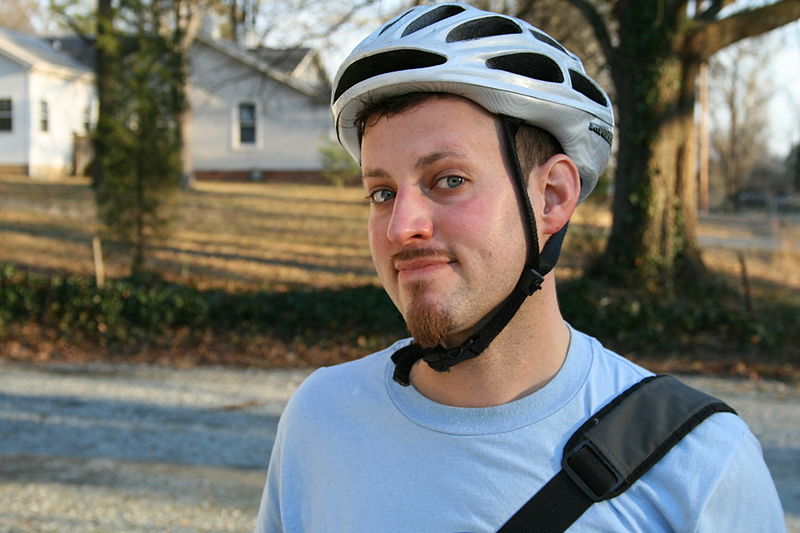
Check out the stations!: http://www.bixi.com/stations
Montreal's bike share system. 300 stations and 3000 bikes... so far.
And here's how they replied.


In 1998 the European Cyclists' Federation adopted a position paper rejecting compulsory helmet laws as being likely to have greater negative rather than positive health effects.[91] The UK cyclists' club, CTC, believes that the "overall health effects of compulsory helmets are negative."[93] The UK minister of transport knew of no evidence to support the claim that helmets saved lives. [94] The British National Children's Bureau has said "The 2004 BMA statement announcing its decision to support compulsory cycle helmets shows how the uncritical use of accident statistics can lead to poor conclusions."[95] The same report estimated that, at most, universal helmet use would save the lives of three children aged 0 to 15 each year. That figure "assumes universal and correct use of helmets, it assumes that risk compensation does not occur and it assumes that no children die as a result of strangulation or other injuries caused by helmet use. These assumptions are most unlikely to be correct in the real world."
----------------
Ok, I can find one basic reason for wearing a helmet:
From what I've read, I'm estimating that it increases my chances of surviving an accident, and living a normal life after the accident, by about 5%, regardless of accident. Head trauma is a bummer though...
I can find three basic reasons for not wearing a helmet.
A range of theories have been proposed to explain why helmet use might cause more or worse accidents.
Under the risk compensation theory, helmeted cyclists may be expected to ride less carefully; this is supported by evidence for other road safety interventions such as seat belts and anti-lock braking systems.[61][62] There is some evidence for risk compensation by children in relation to safety equipment.[63]
3) Motorists actually acting differently when passing helmeted vs. non-helmeted cyclists:
Motorists may also alter their behaviour towards helmeted cyclists. Recent evidence from England found that vehicles passed a helmeted cyclist with measurably less clearance (8.5 cm) than that given to the same cyclist un-helmeted (out of an average total passing distance of 1.2 to 1.3 metres).[65]
-----------------------
Broadcast Date: May 10, 1963
Carnations and chocolates and breakfast in bed – it's become a child's traditional offering on the second Sunday of May, Mother's Day. But what was once a spiritual celebration of motherhood has by 1963 become a big, booming business with florists, restaurateurs, and greeting card companies cashing in. Has Mother's Day become a commercialized scam or is it still a sweet, loving gesture? Panelists debate this subject in this CBC Television feature.On May 12, 1907, two years after her mother's death, she held a memorial to her mother and thereafter embarked upon a campaign to make "Mother's Day" a recognized holiday. On May 8, 1914, President Woodrow Wilson signed a congressional resolution designating the second Sunday in May as Mother's Day.(1) She succeeded in making this nationally recognized in 1914. The International Mother's Day Shrine was established in Grafton to commemorate her accomplishment.
By the 1920s, Anna Jarvis had become soured by the commercialization of the holiday. She incorporated herself as the Mother’s Day International Association, trademarked the phrases "second Sunday in May" and "Mother's Day", and was once arrested for disturbing the peace. She and her sister Ellsinore spent their family inheritance campaigning against the holiday. Both died in poverty. Jarvis, says her New York Times obituary, became embittered because too many people sent their mothers a printed greeting card. As she said,
http://en.wikipedia.org/wiki/Anna_JarvisA printed card means nothing except that you are too lazy to write to the woman who has done more for you than anyone in the world. And candy! You take a box to Mother—and then eat most of it yourself. A petty sentiment!